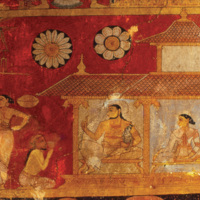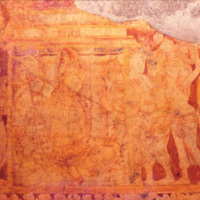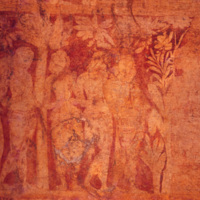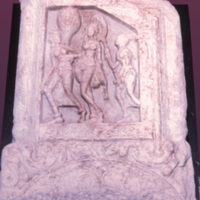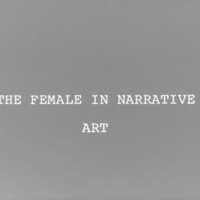Main Menu
AORC Libraries
Browse Archive Items (15 total)
A scene from a Jataka Story
Description: This is a scene from the Vessantara Jataka (one of the former birth stories of the Buddha) painted on the walls of the Madawela vihara at Bokkavela in the Kandy district. While noting the social differences among women themselves, the maid clothed only waist downwords, performing service tasks, and the queen sitting away from it all, one is also made aware of the role differences between male and female, the King appearing as the primary decision maker with the queen playing a secondary role.…
Contributor: Co-Author: Seneviratna, Harsha
Collection: Women in Sri Lankan Sculpture and Painting
Tags: AISLS, ICES, PDWESLSP, The female in narrative art
A scene from a Jataka Story
Description: This one-time queen turned beggar, carrying her crippled lover, an illustration of the Cullapaduma Jataka (one of the former birth stories of the Buddha) at the Tivanka Image House.
Contributor: Co-Author: Seneviratna, Harsha
Collection: Women in Sri Lankan Sculpture and Painting
Tags: AISLS, ICES, PDWESLSP, The female in narrative art
Paintings at the Tivanka Image House, life of the Buddha
Description: Many of the 12th and 13th century A.D. paintings at the Tivanka Image House in Polonnaruva are faded. However, some episodes from the life of the Buddha as well as Jataka stories can be identified. This scene shows a group of elite women associated with the events preceding the birth of prince Siddhartha.
Contributor: Co-Author: Seneviratna, Harsha
Collection: Women in Sri Lankan Sculpture and Painting
Tags: AISLS, ICES, PDWESLSP, The female in narrative art
Three women of different social grades
Description: In India, narrative sculpture is as old as Buddhist art itself, the impact of which was no doubt felt in Sri Lanka. This marble relief which belongs to the Amaravati art tradition of the early centuries of the Christian era appears to have been imported from India. The plaque was found in 1986 during excavations associated with the Cultural Triangle Project, near the so-called Buddhist Railing site close to the Jetavanarama stupa. The scene, which probably illustrates an episode in the life of…
Contributor: Co-Author: Seneviratna, Harsha
Collection: Women in Sri Lankan Sculpture and Painting
Tags: AISLS, ICES, PDWESLSP, The female in narrative art
The female in narrative art
Description: The female in narrative art: A useful source for the study of conceptual positions regarding women in early Sri Lankan society is narrative art, which is largely in the form of painting. Unfortunately the chronological distribution of this material is extremely uneven, being weighted on the last two centuries of the period dealt with in this survey. Very little of the narrative paintings of the earlier period has survived.
Contributor: Co-Author: Seneviratna, Harsha
Collection: Women in Sri Lankan Sculpture and Painting
Tags: AISLS, ICES, PDWESLSP, The female in narrative art



